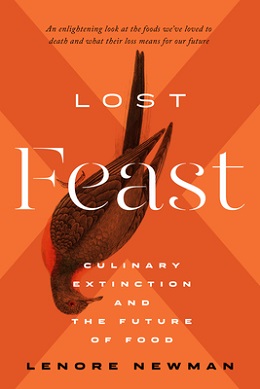Lost Feast
Lost Feast is a term that encompasses the historical, cultural, and environmental aspects of foods and culinary practices that have disappeared or are on the verge of extinction. The concept of Lost Feast is significant in understanding the evolution of dietary habits, agriculture, and food culture over time. It also highlights the impact of human activity on biodiversity and the environment, as well as the importance of preserving traditional knowledge and culinary heritage.
History[edit | edit source]
The history of Lost Feast is as diverse as the foods it represents. It includes the loss of specific crop varieties, animal breeds, and culinary techniques that were once prevalent in various cultures around the world. Factors contributing to these losses include industrialization of agriculture, changes in consumer preferences, environmental degradation, and globalization. The disappearance of these elements from our diets not only diminishes the genetic diversity of our food systems but also erases parts of cultural identities and traditions.
Impact[edit | edit source]
The impact of Lost Feast is multifaceted. Ecologically, the reduction in diversity can lead to weakened resilience against pests, diseases, and changing climate conditions, making food systems more vulnerable. Culturally, the loss of traditional foods can lead to a disconnection from heritage and a homogenization of global diets. Nutritionally, it can result in diets that are less varied and potentially less nutritious.
Preservation Efforts[edit | edit source]
Efforts to preserve Lost Feasts involve a range of activities, from seed saving and crop diversity projects to the documentation and revival of traditional culinary practices. Organizations like the Slow Food movement and various seed banks around the world work to protect and promote endangered foods. Additionally, chefs, food historians, and communities play a crucial role in keeping these traditions alive through education and practice.
Examples[edit | edit source]
Examples of Lost Feast items include ancient grains like Einkorn wheat, which was one of the first domesticated crops but fell out of favor due to lower yields compared to modern wheat varieties. Another example is the Passenger Pigeon, once a common source of food in North America, which became extinct in the early 20th century due to overhunting and habitat loss.
Conclusion[edit | edit source]
Lost Feast serves as a reminder of the dynamic relationship between humans and their food sources. It underscores the need for sustainable practices in agriculture, food production, and consumption to ensure the preservation of biodiversity and cultural heritage for future generations. By understanding and valuing the foods we have lost, we can work towards a more resilient and diverse food system.
Navigation: Wellness - Encyclopedia - Health topics - Disease Index - Drugs - World Directory - Gray's Anatomy - Keto diet - Recipes
Search WikiMD
Ad.Tired of being Overweight? Try W8MD's physician weight loss program.
Semaglutide (Ozempic / Wegovy and Tirzepatide (Mounjaro / Zepbound) available.
Advertise on WikiMD
WikiMD is not a substitute for professional medical advice. See full disclaimer.
Credits:Most images are courtesy of Wikimedia commons, and templates Wikipedia, licensed under CC BY SA or similar.Contributors: Prab R. Tumpati, MD

